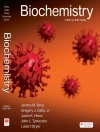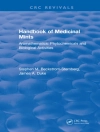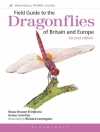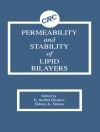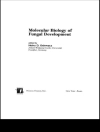This book summarizes the current knowledge of anthocyanins, provides systematic information for future exploration of anthocyanin applications. It focuses on several aspects regarding the studying progression in the field of anthocyanins. The first section of the book provides a brief introduction to the scope and progress on anthocyanins, which is followed by the second section that describes the natural sources, structure, extraction approaches, bioavailability, and current stabilizing approach of anthocyanins. Then in the third part, the book focuses on the industrial processing of anthocyanins in foods by discussing the impact of food processing on anthocyanin structure and composition as well as classical processing techniques on anthocyanin-containing foods, including high-pressure, encapsulation, microwave, and combined application of the above techniques. In the last section of the book, the authors explore the currently most popular application of anthocyanins in improving human health, such as the effect of anthocyanin on vision, metabolism, neural system, cardiovascular system, and cancers. The book will facilitate readers’ understanding of the progress of anthocyanin studies. And it will benefit researchers and graduate students in the fields of natural products, functional food, and nutrition, etc.
Jadual kandungan
Chapter 1. Scope and Progress on Anthocyanins.- Chapter 2. Dietary Sources of Anthocyanins.- Chapter 3. Extraction and Identification of Anthocyanins.- Chapter 4. Biosynthesis and Chemistry of Anthocyanins.- Chapter 5. Bioavailability and Bioabsorption of Anthocyanins.- Chapter 6. Modification and Stabilization of Anthocyanins. Chapter 7. Impact of Food Processing on Anthocyanins. Chapter 8. High Pressure.- Chapter 9. Encapsulation.- Chapter 10. The impact of microwave on the storage, stability, and bioavailability of anthocyanins from different sources in food systems.- Chapter 11. Combined Application of Processing Techniques.- Chapter 12. Other Techniques.- Chapter 13. Biological Activity of Anthocyanins.- Chapter 14. Anthocyanins in Health Protection.- Chapter 15. Visual Protection Effect.- Chapter 16. Unveiling the metabolic modulatory effect of anthocyanin and gut microbiota involvement.- Chapter 17. Beneficial effects of anthocyanins on nervous system Introduction.- Chapter 18. Cardiovascular Protection Effect.- Chapter 19. Anti-cancer activity of anthocyanin.- Chapter 20. Immune system promotion and anti-bacterial, anti-virus effects of anthocyanins.
Mengenai Pengarang
Dr. Bin Li is a professor in the College of Food Science at Shenyang Agriculture University. He obtained his Ph.D. from Shenyang Agriculture University in 2011. He has done post-doctoral research at Cornell University in America. Now he is an assistant dean of the Institute of science and technology development, the head of the functional food safety and health team in Shenyang Agricultural University, and deputy director of the National Center for Research and Development of Berry Processing Technology.
Dr. Li Wang is a professor of the School of Food Science and National Engineering Laboratory for Cereal Fermentation Technology at Jiangnan University. She obtained her Ph.D. from Jiangnan University in 2009. She has done the visiting scholar research at Cornell University in 2015. Now she is the director of the joint research center for deep processing of agricultural products, the secretary of the party branch for National Engineering Laboratory for Cereal Fermentation Technology. Her research contains deep processing rice products, functional foods, and bioactive ingredients. She has published over 40 papers as first author or corresponding author. She is a co-inventor of 29 issued patents. She hosted 16 projects involved bioactive ingredients, rice processing, and rice protein characterization. She has received several awards including Top Ten Outstanding Young Talents of China for agricultural products processing industry (2017), Young Top-notch Talents Program of China for grain industry (2016), Second award of China National Light Industry Council (2015), and Second award of China Commercial Association for the advancement of science (2012).
Dr. Weibin Bai is a Professor of the College of Science and Technology at Jinan University. He obtained his Ph.D. from China Agricultural University in 2009. He is the vice dean of the College of Science and Engineering, the executive vice dean of Institute of Food Safety and Nutrition, the director of Guangdong Engineering Technology Center for Molecular Rapid Detection of Food Safety, the member of the 3rd Youth Work Committee of Chinese Institute of Food Science and Technology, and the director of Youth Work Committee of Guangdong Institute of Food Science and Technology.
Dr. Wei Chen is a professor of the Department of Food Science and Nutrition at Zhejiang University. He obtained his Ph.D. from Zhejiang University in 2008. He is the director of the Institute of Food Bioscience and Technology, Zhejiang University. He is the “Chang Jiang Scholars Program-Young Scholar”, and hosts outstanding youth found of Zhejiang Province, Qianjiang talents program of Zhejiang Province, and 151 talents program of Zhejiang Province.
Dr. Fang Chen is a Professor of the College of Food Science and Nutritional Engineering at China Agricultural University, China. She obtained her Ph.D. from China Agricultural University in 2003. She is the ‘Yangtze River Scholar’, the leading scientific and technological innovation talent of the national ‘Ten Thousand People Plan’, the Excellent Young Scholar of National Science Fund, the Associate Director of Key Laboratory of Fruit and Vegetable Processing of the Ministry of Agriculture, the Secretary-General of National Strategic Alliance of Fruit and Vegetable Processing Industry Innovation.
Dr. Chi Shu is a lecturer at the Institute of Food Science, Shenyang Agricultural University, China.


